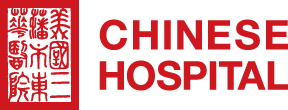Necessary services have not come easy in San Francisco for the Chinese, especially health care. It’s been well over a century since society, including political and civic leaders, denied Chinese immigrants the services they needed to get well and stay healthy. Now, after years of hard work and perseverance, they have an expansive new facility worth celebrating that welcomes everyone—Chinese Hospital. With the opening of its new 100,000 square-foot Patient Tower, Chinese Hospital offers more beds and expanded emergency, intensive care, cardiopulmonary, and prescription services—right in the heart of Chinatown. It is the only Chinese-operated and -governed independent hospital in North America. Demolition of the old building began three years ago. The expansion will add space, services, and new technology to a facility that previously hustled to keep up with demand. The expansion serves as a modern example of an ethnic group providing for their community.

By StoryStudio April 12, 2016 5:08 pm
Tumultuous beginnings At the dawn of the Gold Rush era, the small but growing California population initially welcomed Chinese immigrants for their strong work ethic. But as gold became harder to find and American laborers didn’t reap the riches that were had during the early stages, they turned against the Chinese, blaming them for their misfortune. In the late 1870s, when the economy took a turn for the worse, they burned Chinese laundries and other Chinese-owned businesses. The discrimination spread nationwide, evidenced by the passage of the Chinese Exclusion Act in 1882, which prohibited all immigration of Chinese laborers. It wasn’t repealed until 1943. In San Francisco, the Chinese took refuge in their neighborhood, Chinatown. Local schools and hospitals banned them, even during the bubonic plague epidemic that began in San Francisco in 1900. Recognizing the need to take care of their own, a group of 15 community organizations, led by the influential Six Companies, formed the Tung Wah Dispensary in 1899.
To cater to the Chinese practice of using herbal and Eastern medicine, the dispensary provided both Western-trained physicians and Chinese herbalists. Like much of San Francisco, the 1906 earthquake destroyed the Dispensary.
Just as they had before, the community found a way to take care of itself. To rebuild and create a more modern hospital, the 15 community organizations formed the Chinese Hospital Association, a nonprofit, public-benefit corporation. After a few years of fundraising, Chinese Hospital as we know it—or knew it until this year—opened in 1925 at 835 Jackson Street. It was an epic achievement for the community. Chinatown celebrated with a week-long celebration that included beauty pageants and parades, with marching bands and the colorful lion dances and ear-splitting firecrackers we hear during Chinese New Year.
Chinese Hospital grew steadily over the next 50 years. It faltered financially for a short time early on because it provided too much free care. It didn’t want to turn anyone away. New growth In 1979, Chinese Hospital built an annex to provide improved services and increased capacity to meet the community’s growing needs. The new facility, which is a replacement of the original 1925 hospital, sits next door to the annex, will soon be remodeled as well. While Chinese Hospital’s centralocation serves thousands of patients, it recognized the need to provide care to the many Chinese who had moved outside of Chinatown. In 1996, Chinese Hospital opened its first primary care clinic in the Sunset district, followed by additional locations in the Excelsior district and in Daly City. Chinese Hospital now has a total of four neighborhood clinics, as well as outpatient centers in Daly City and at Pacific and Stockton in Chinatown.
Rooted in tradition Located on Jackson Street between Stockton and Powell, across from seafood and produce markets, Chinese Hospital remains rooted in a tradition of families serving families. Doctors’ children grow up to become doctors themselves. Patients refer their siblings, aunts, uncles, and children to Chinese Hospital. A black-and-white photo of the original Chinese Hospital, its physicians and employees gathered outside, graces an outside wall. It’s a reminder of the early struggles and many years spent maintaining the Chinese community’s health and well-being. Physicians often form strong bonds with patients through the years. These patients remain loyal to their neighborhood hospital, choosing it for not only the quality of care but also for the cultural familiarity. They know the staff speaks their language—a critical service for Chinese-Americans.
Moving forward Due to the expansion of its health insurance company, Chinese Community Health Plan (CCHP), as well as the hospital’s outreach to the rest of San Francisco and northern San Mateo County, Chinese Hospital’s patient demographics have evolved from nearly 100 percent Chinese to a diverse mix of ethnicities including non-Chinese Asian, Caucasian, Hispanic and African American. CCHP currently has nearly 30,000 members in its Medicare and Commercial programs. Although CCHP has long served Medicare beneficiaries and local businesses, it’s also seeing a boost in young adults who live and work in the city or northern San Mateo County. These new members may not see the inside of a hospital for many years, but they choose CCHP and Chinese Hospital because of the culture of quality care the system provides. With the launch of the new Chinese Hospital, the organization will continue to offer the intimate, world-class care it has offered for more than a century. With its expanded and updated facilities and services, it stands poised to serve as the cornerstone of its community for many years to come. To learn more, visit us at www.ChineseHospital-SF.org/new-hospital



